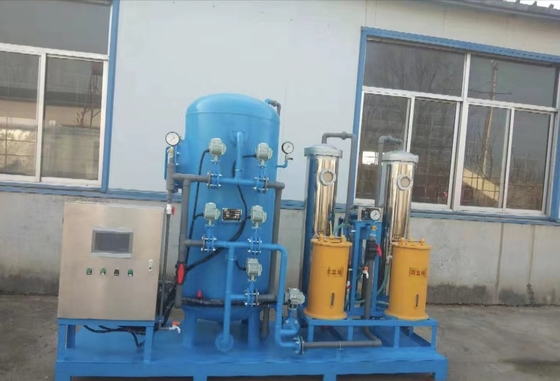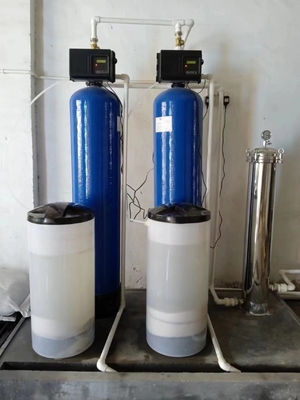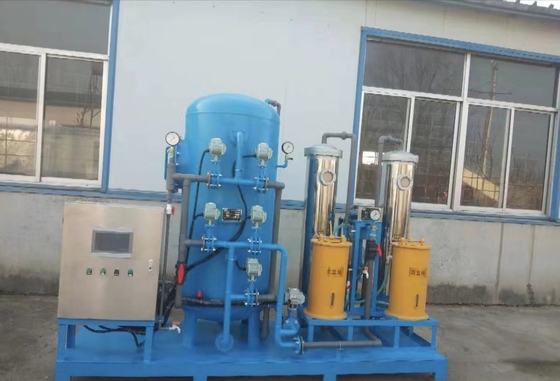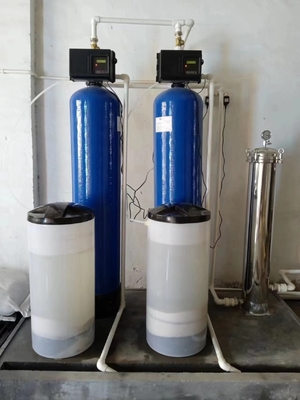-
Condensate Water Recovery Device
-
Reverse Osmosis Equipment
-
Fully Automatic Water Softener
-
Industrial Sand Filter
-
Water Supply Equipment
-
Chemical Dosing Device
-
Container Flipper
-
Container Loading and Unloading Machine
-
Truck Flipper
-
Electric Transfer Cart
-
Electronic Weighbridge
-
Mobile Loading Dock Ramp
-
Air Compressor Heat Recovery
-
Water Treatment Accessories
Automatic Twin Tank Water Softener With FRP Stainless Steel And Carbon Steel Construction

Contact me for free samples and coupons.
Whatsapp:0086 18588475571
Wechat: 0086 18588475571
Skype: sales10@aixton.com
If you have any concern, we provide 24-hour online help.
x| Features | High Automation Level, Stable Water Quality, High Efficiency, Low Energy Consumption, Low Operating Costs. | Materials | Fiberglass Reinforced Plastic (FRP), Stainless Steel, Carbon Steel |
|---|---|---|---|
| Product Specifications | 1-100T/H | Application Fields | Industrial Boilers, Central Air Conditioning Systems, Heat Exchangers, Hotels, Restaurants, Food And Chemical Industries, Laundry And Dyeing, Medical And Sanitation, Etc. |
| Origin | Taian, Shandong | Brand | Tonglida |
| Product Information | Automatic Water Softening Equipment - Dual-Tank, Single-Tank, Continuous Water Production | ||
| Highlight | automatic twin tank water softener,automatic 2 tank water softener,frp 2 tank water softener |
||
Product Description:
The fully automatic water softener comes with a comprehensive automatic control system that can be customized as a single-tank or dual-tank system based on user requirements. The complete system operates automatically, with one tank being used while the other acts as a backup. When the operating tank reaches the set water production capacity, it automatically switches to regeneration mode, and the backup tank takes over the operation. The entire softening system operates in a fully automatic mode that includes several processes, including running, backwashing, brine suction, ion exchange, forward flushing, and standby.
The raw water flows through the resin tank containing ion exchange resin, which is equipped with an automatic control valve. The ions Na+ in the resin undergo ion exchange with the cations (Ca2+, Mg2+) in the water, resulting in water hardness being ≤0.03mmol/L. When the system reaches the set flow rate, the controller automatically starts the regeneration process.
- Backwashing: Water is directed upwards through the bottom distributor to flush and loosen the resin bed, simultaneously removing accumulated suspended particles from the resin surface.
- Brine Suction Regeneration: Saturated brine solution is injected into the resin tank through the brine injector after dilution to a concentration of 5-8%. The brine solution flows downward through the deactivated resin bed, regenerating the resin and restoring its original exchange capacity.
- Exchange: The exchange process consists of two steps. In the first step, after the regeneration liquid is injected, there is still some regeneration brine in the upper space of the resin tank that has not participated in the regeneration process. To fully utilize this brine, clean water with the same flow rate as the regeneration liquid is used to thoroughly regenerate the uninvolved brine through the resin bed. This step is called exchange. In the second step, the regeneration waste liquid in the resin pores is displaced from the resin bed.
- Forward Flushing: The purpose of forward flushing is to completely remove the residual regeneration waste liquid from the resin bed and clean it until the water meets the required standards.
| Project Name | Unit | 1T/H | 30T/H | 35T/H | 40T/H | 50T/H | 60T/H | 80T/H | 100T/H | |
| Inlet pressure | mpa | 0.15-0.25 | ||||||||
| Water production | T/H | 0.8-1.2 | 27-33 | 32-38 | 35-45 | 45-55 | 55-65 | 70-90 | 90-110 | |
| Raw water turbidity | O | ≤2 | ||||||||
| Raw water hardness | mmol/L | ≤15 | ||||||||
| Residual hardness of soft water | mmol/L | ≤0.03 | ||||||||
| Self-consumption water rate | % | 4 | ||||||||
| Power supply | Single-phase electricity 50HZ 220V | |||||||||
| Diameter of exchange column | Stainless steel head | mm | ∅750 | ∅750 | ∅900 | ∅900 | ∅1000 | ∅1200 | ∅1400 | |
| Ordinary head | mm | ∅160 | ∅760 | ∅760 | ∅890 | ∅900 | ∅1000 | ∅1180 | ∅1400 | |
| Resin tank height | mm | |||||||||
| Inlet and outlet water pipeline | Solenoid valve | mm | DN15 | DN65 | DN65 | DN80 | DN80 | DN100 | DN125 | DN150 |
| Valve body | mm | DN20 | ||||||||
| Flow meter | L/H | 60 | 600 | 600 | 1000 | 1000 | 2000 | 2000 | 2500 | |
| Resin filling capacity | Solenoid valve | KG | ||||||||
| Total weight of equipment | KG | |||||||||
| Salt tank size | Self-processing | mm | 225*650 | 640*750 | 640*750 | 700*850 | 760*800 | 760*800 | 890*800 | |
| Purchase from outside | 1000L | 1000L | 1500 | 2000 | ||||||
Features:
Our system boasts a high level of automation that saves you time and effort in maintaining water quality. Through advanced technology, our system can stabilize water quality, ensuring clean and clear water for all your aquatic needs.
With a focus on efficiency, our system is designed to operate at a high level of productivity. This is thanks to the utilization of the latest innovations in technology and engineering. Our system is engineered for low energy consumption, which translates to significant savings on your utility bills.
We are committed to offering you cost-effective solutions that provide long-term value. Our system's low operating costs ensure that you don't have to worry about high maintenance fees, allowing for a better investment and return.
Technical Parameters:
The Automatic Water Softener features simple and reliable operation with automatic control. This equipment is capable of softening water with high hardness of up to ≤15mmol/L to a residual hardness of ≤0.03mmol/L in a single pass.
The regeneration time is short, and resin consumption and salt consumption are kept low, ensuring stable water quality and low operating costs.
The equipment has a compact and rational design and is lightweight, requiring only a small footprint. It is delivered from the factory as a complete machine with a simple installation process. All that's needed is to connect the inlet and outlet pipes and power supply to start water production.
Applications:
The Automatic Water Softener system is utilized for the purpose of treating circulating makeup water in a range of equipment including steam boilers, hot water boilers, heat exchangers, steam condensers, air conditioning systems, and direct-fired equipment and systems. Additionally, it is used for both domestic and industrial water treatment across a wide range of industries including food, electroplating, pharmaceuticals, chemicals, printing and dyeing, textiles, electronics, as well as pre-treatment for desalination systems.
The water softener system functions by significantly reducing the hardness of the water through the process of single-stage or multi-stage water softening. As a result, the produced water is of a considerably reduced hardness and is thereby able to serve specific purposes.
In brief, the Automatic Water Softener system is designed to soften water and ensure that it is suitable for its intended use by minimizing its hardness level. It is a crucial requirement for industries as well as households and is an effective solution for water management.






